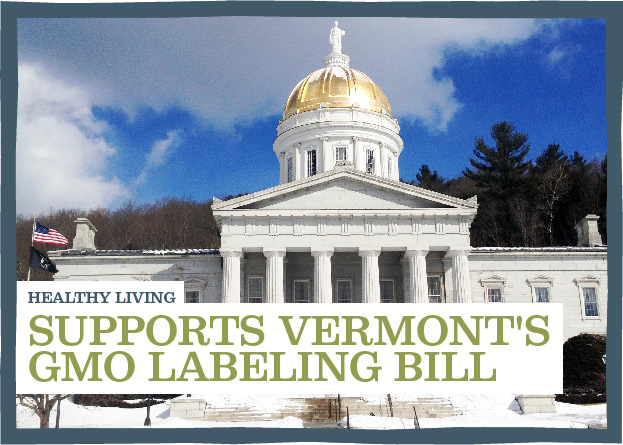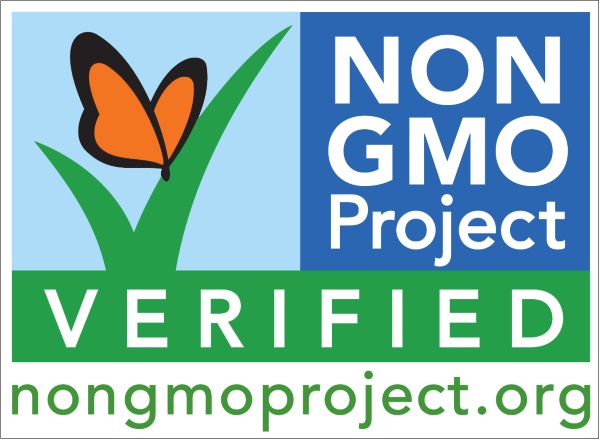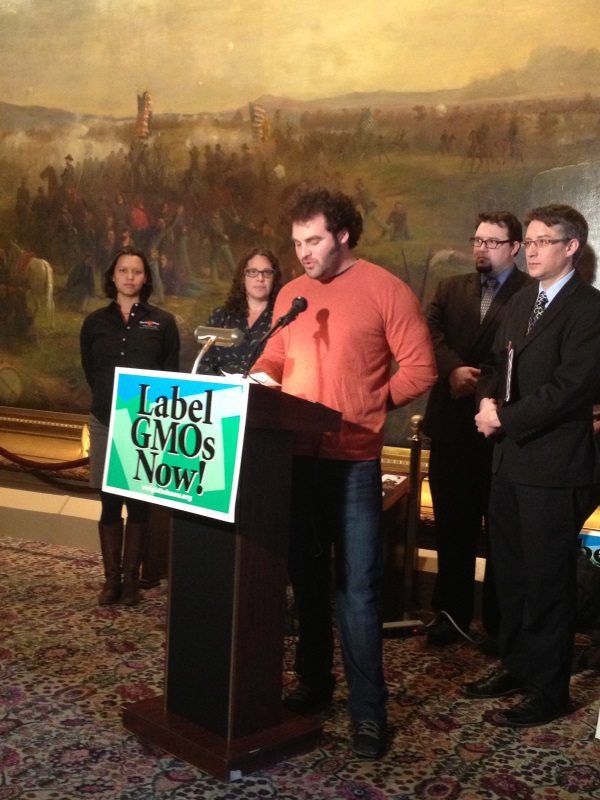Healthy Living Leads the Fight Against GMO’s

A few months ago, Vermont was the first state in the country to pass the first GMO labeling law without a trigger clause (a clause that requires a certain number of other states to pass similar laws before taking effect). Healthy Living, along with a group of devoted and forward thinking businesses, led the fight to enact the new law that would give consumers the right to know what’s in the food they buy. Together, we did it, and change is coming.
We’ve long believed that consumers have a right to know what’s in your food. We strongly support mandatory labeling of GMO-derived food. We believe that government-mandated labeling of GMO ingredients would enable shoppers, retailers and manufacturers to make purchasing decisions that reflect their beliefs.
Many products are already labeled ‘GMO free’, but the new law puts the onus on manufacturers producing food with GMO ingredients. We think this is the right move, because it puts the burden on brands and companies that using GMO’s, instead of the brands already doing the right thing.
We are the first grocery store in VT to fight for GMO transparency and we’re proud of it.
GMO FAQ’s
What are GMOs?
Organisms whose genetic make up (DNA) has been altered in a way that does not occur naturally.
Why are GMOs bad?
Crops are currently modified to survive unabated herbicide, fungicide and pesticide treatments and produce their own pesticides, which leads to rampant chemical overuse, gradual pest and weed resistance (known as “super bugs” and “super weeds”), mono-cropping, and lack of plant and seed diversity. GMO seeds are also a patented technology, and farmers who are victim to drift or accidental cross-pollination of GMO seeds into their fields, are subject to expensive patent infringement lawsuits.
Where might I find GMOs?
In North America, over 70% of our packaged foods contain GMOs.
Corn = corn syrup, corn starch.
Soy = hydrolyzed vegetable protein.
Canola = canola oil.
Sugar beets = processed sugar.
Cotton = cottonseed oil.
Various food additives including flavoring agents, nutritional supplementation, thickeners and pH regulators.
Meat and dairy animals as well as farmed fish may eat GMO feed since GMOs are prevalent in the commodity grain market. Animal feed can be a source of GMOs also. If a chicken, cow or pig eats GMO grain, it shows up in the meat they produce, and also:
Milk
Cheese
Meat (chicken, pork, beef)
Eggs
Farmed fish
How can I avoid GMOs?
To avoid GMOs, eat certified organic foods, which by legal definition cannot contain GMOs, and look for the Non-GMO Project Verified label.

Healthy Living will continue to be a leader in the fight against GMOs. Feel free to reach out to us with questions or comments, we are here to help. Thanks! Eli / Owner / Eli@healthylivingmarket.com




